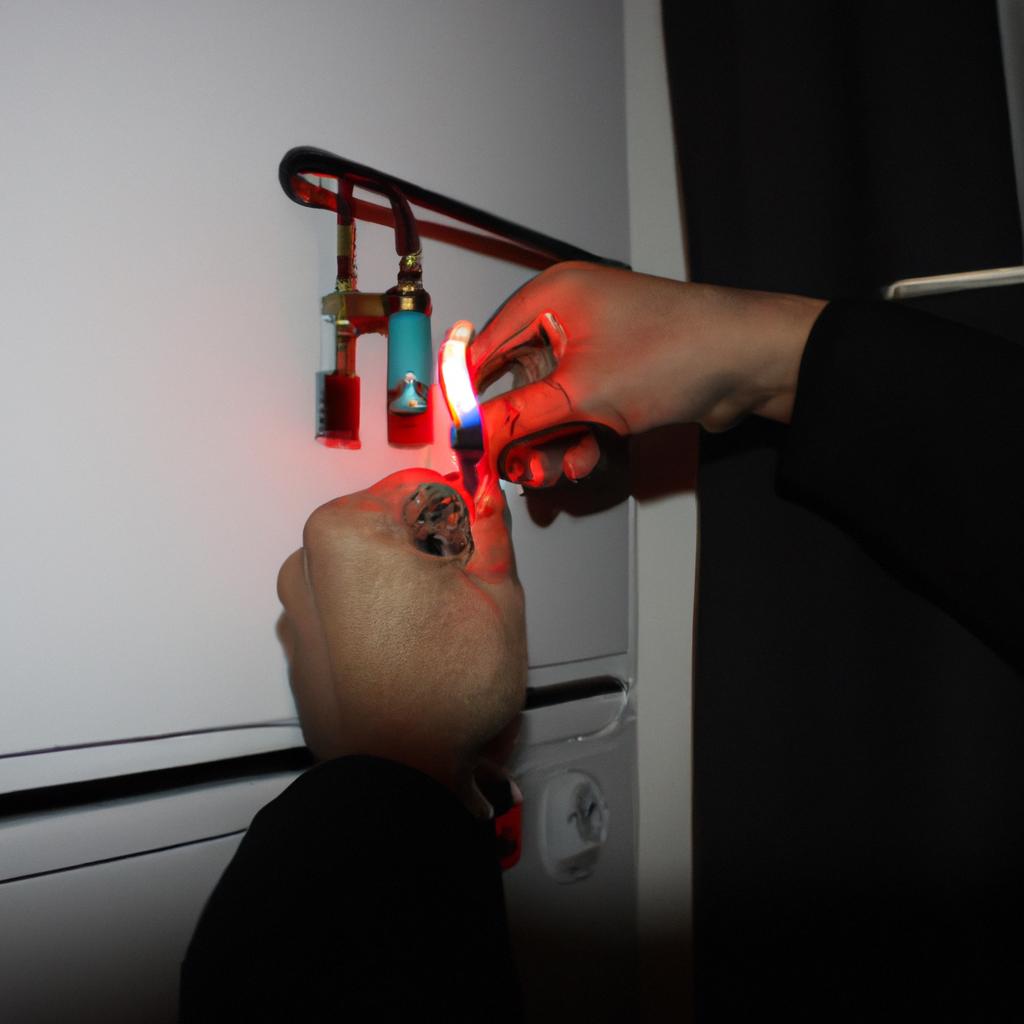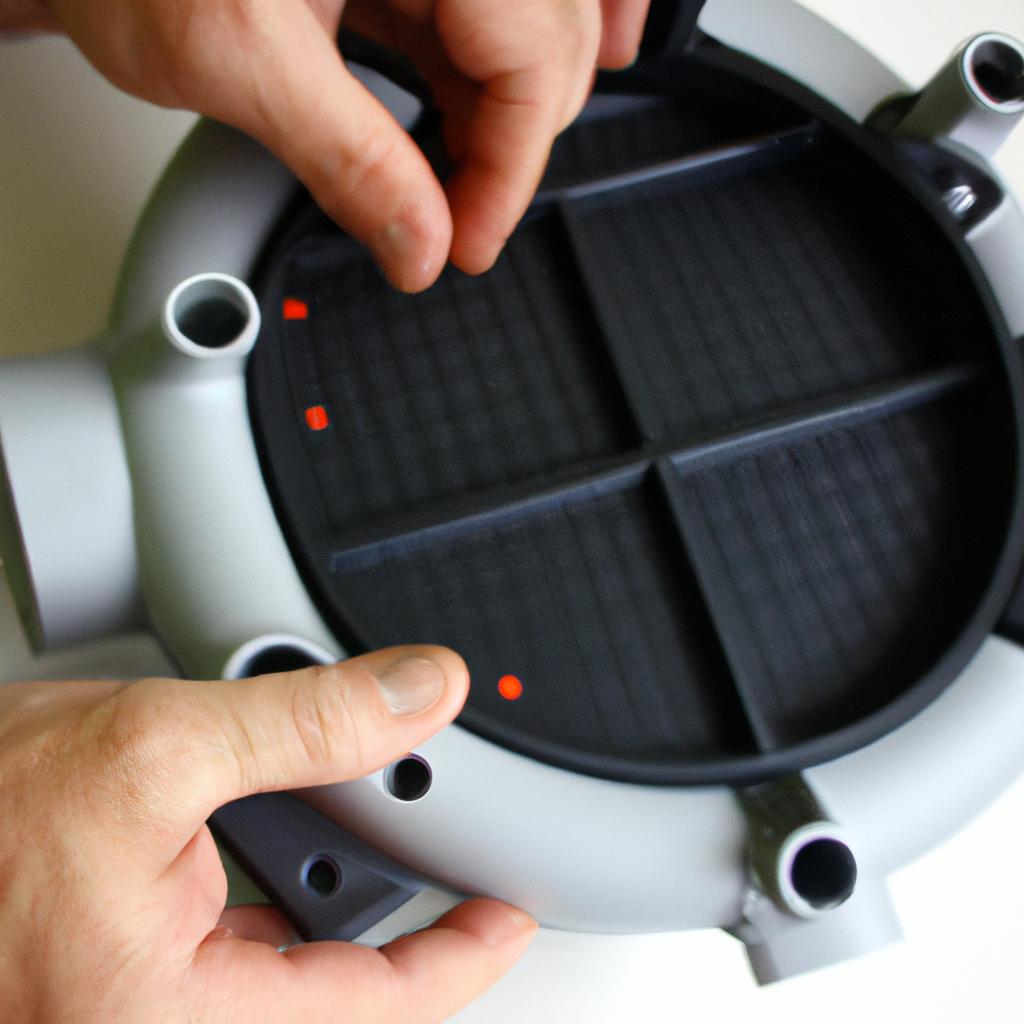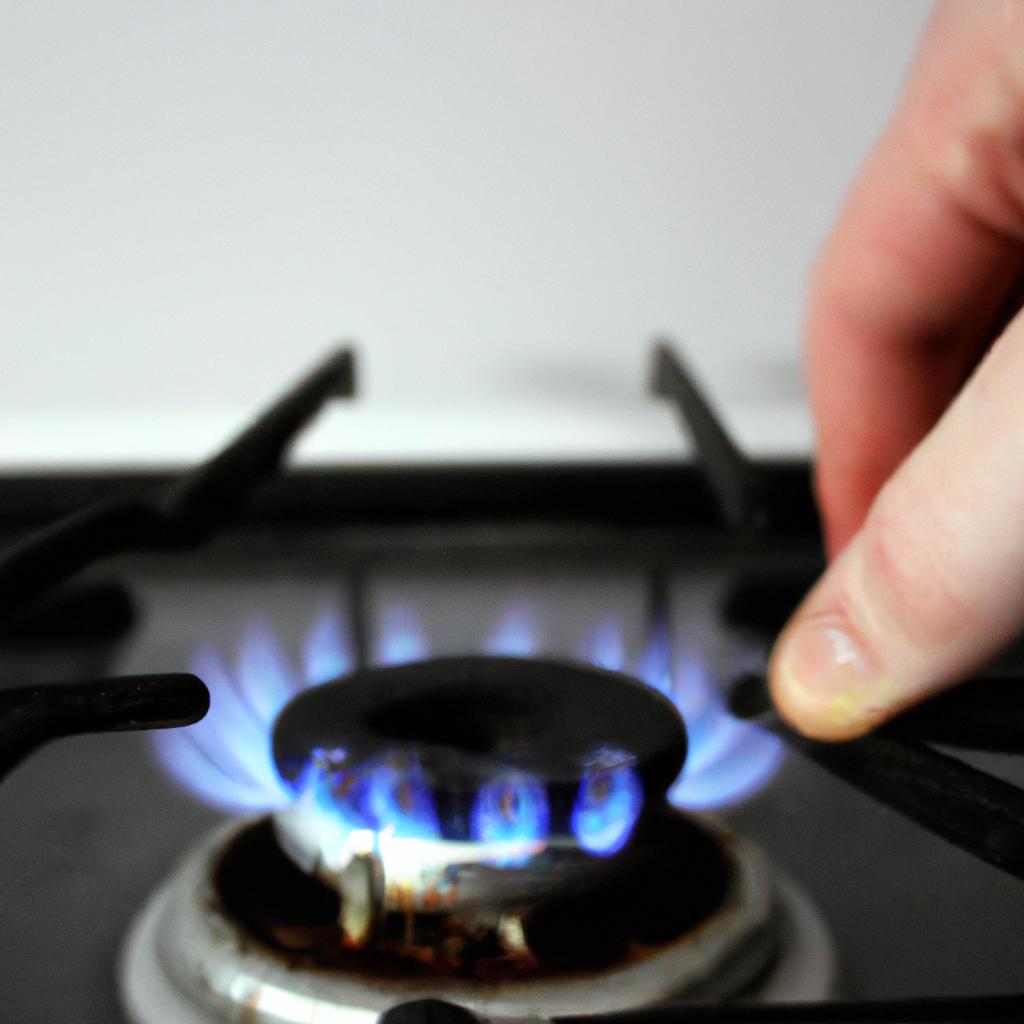Inconsistent heat output in gas appliances, boilers, and stoves can be a frustrating issue that many homeowners encounter. Imagine coming home after a long day to cook dinner on your gas stove, only to find that the flames are not providing enough heat to properly cook your food. This scenario is just one example of the various problems that can arise when dealing with inconsistent heat output from these types of appliances.
Understanding the causes behind inconsistent heat output is crucial for troubleshooting and resolving such issues effectively. Gas appliances, boilers, and stoves rely on combustion processes involving natural gas or propane to generate heat. However, several factors can disrupt this process, leading to uneven heating or reduced temperature output. These factors may include improper burner adjustment, clogged fuel lines, faulty ignition systems, inadequate ventilation, or even issues with the gas supply itself. Identifying and addressing these underlying causes requires careful examination and knowledge of how each component within these appliances operates harmoniously to produce consistent heat output. In this article, we will delve into common troubleshooting techniques for diagnosing and rectifying inconsistencies in heat production within gas appliances, boilers, and stoves.
Checking gas supply
Checking Gas Supply
Gas appliances such as boilers and stoves rely on a steady supply of gas to operate efficiently. In cases where the heat output from these appliances is inconsistent, it is crucial to first check the gas supply. Let us consider a hypothetical situation in which a homeowner notices that their stove flame keeps flickering and does not provide consistent heat.
To ensure that the gas supply is not causing the issue, there are several factors to consider:
- Gas Meter: Start by checking the gas meter to verify if it is functioning correctly. Ensure that the valve leading to the appliance is fully open and not obstructed in any way.
- Pressure Regulator: Examine the pressure regulator located near the main shut-off valve. Check for signs of damage or wear and tear that could impact its effectiveness.
- Gas Lines: Inspect all gas lines connecting the appliance to the main supply line for leaks or blockages. Even small leaks can significantly affect performance.
- External Factors: Consider external influences such as severe weather conditions or construction work nearby that may have disrupted the gas supply temporarily.
By following this checklist, homeowners can identify potential issues with the gas supply that might be affecting their appliances’ heat output.
| Potential Issues | Indicators | Solution |
|---|---|---|
| Clogged Gas Line | Weak flame | Professional cleaning or replacement |
| Leaking Connection | Smell of gas | Immediate professional assistance |
| Faulty Pressure Regulator | Fluctuating flames | Contact a certified technician |
| Disrupted Gas Supply | No flame | Contact utility provider for support |
Addressing these concerns promptly will help restore consistent heat output from your gas appliances.
Moving forward, let’s delve into inspecting burner or pilot light functionality as another step in troubleshooting inconsistent heat output.
Inspecting burner or pilot light
Having ensured a steady gas supply, we can now move on to inspecting the burner or pilot light. Let’s consider an example scenario where a homeowner notices inconsistent heat output from their gas stove. To address this issue effectively, it is important to follow proper troubleshooting steps.
Inspecting Burner or Pilot Light
One common cause of inconsistent heat output in gas appliances, boilers, and stoves is a malfunctioning burner or pilot light. These components play a vital role in generating heat by igniting the gas fuel source. Here are some steps you can take to troubleshoot this problem:
-
Visual inspection:
- Check for any visible clogs or blockages around the burner ports.
- Ensure that the pilot light flame is strong and steady; if not, it may need adjustment.
- Look for signs of corrosion or damage on both the burner and pilot light assembly.
-
Cleaning:
- Use a soft brush or cloth to remove dirt, debris, or food particles that might be obstructing the burner ports.
- Clean the pilot light assembly using compressed air to clear any accumulated dust.
-
Testing functionality:
- Test each individual burner by turning them on one at a time to determine if any specific burners are causing the inconsistency.
- If applicable, test the pilot light ignition system according to manufacturer instructions.
-
Professional assistance:
- If despite your efforts, the inconsistent heat output persists, it may be necessary to contact a qualified technician who can further diagnose and resolve complex issues with burners or pilots.
Table: Potential Causes of Inconsistent Heat Output
| Cause | Symptoms | Potential Resolution |
|---|---|---|
| Clogged burner ports | Weak or uneven flame | Clean the burner ports thoroughly |
| Malfunctioning pilot light | Inconsistent ignition | Adjust or replace the pilot light |
| Corroded or damaged components | Irregular heating patterns | Replace any corroded or damaged parts |
| Faulty ignition system (if applicable) | Difficulty igniting | Seek professional assistance if needed |
By following these troubleshooting steps and addressing issues with burners or pilot lights, you can often resolve inconsistent heat output in gas appliances. However, if the problem persists, it may be necessary to move on to cleaning or replacing gas valves.
To ensure optimal performance of your gas appliance, boiler, or stove, we will now discuss the process of cleaning or replacing gas valves.
Cleaning or replacing gas valves
Inspecting Burner or Pilot Light
Now, let’s delve further into troubleshooting methods for gas appliance issues.
Imagine a scenario where you have been experiencing fluctuating heat from your gas stove. Upon inspection, you notice that the flame on one burner is significantly smaller than the others. This could indicate a blockage in the fuel supply line or an issue with the burner itself.
To troubleshoot this problem effectively, consider the following steps:
- Check for debris: Remove any visible obstruction by gently cleaning around the affected burner using a soft brush.
- Inspect gas valves: Ensure that all gas valves leading to the problematic burner are fully open and not partially closed.
- Verify fuel supply: Confirm if there are no interruptions or leaks in the fuel supply line feeding into the faulty burner.
- Examine ignition system: Assess whether there are any problems with the ignition system responsible for lighting up the burners.
By following these guidelines, you can enhance safety and potentially resolve common inconsistencies in heat output within your gas appliances. Remember to exercise caution when dealing with gas-related issues and seek professional assistance if needed.
| Common Issues | Possible Causes | Troubleshooting Tips |
|---|---|---|
| Low heat | Clogged fuel supply line | Clean debris from line |
| Partially closed gas valve | Check valves and ensure they’re open | |
| Faulty ignition system | Inspect ignition components | |
| Uneven heating | Damaged burner | Replace damaged component |
| Incorrect air-to-fuel mixture | Adjust air intake |
As we conclude this section on inspecting burners or pilot lights, it is essential to remember that regular maintenance and prompt attention to potential issues contribute to the longevity and optimal functioning of your gas appliances. In our next section, we will explore another vital aspect of troubleshooting gas appliance inconsistencies: examining thermostat settings.
Transitioning into the subsequent section, let’s now focus on examining thermostat settings as part of our comprehensive troubleshooting process.
Examining thermostat settings
Examining the gas valves is an important step in troubleshooting inconsistent heat output in gas appliances, boilers, and stoves. In the previous section, we discussed cleaning or replacing gas valves to ensure proper functioning. Let us now move on to examining thermostat settings as another potential cause for the issue.
Consider a scenario where a homeowner notices that their gas stove is not producing consistent heat. Despite adjusting the burner knobs, they find it difficult to maintain a steady temperature while cooking. Examining the thermostat settings can help identify if this inconsistency is due to incorrect temperature control.
When investigating thermostat settings, there are several factors to consider:
- Temperature calibration: Ensure that your thermostat is accurately calibrated by comparing readings with an external thermometer. If there is a significant discrepancy between the two measurements, recalibration may be necessary.
- Fan operation: Check whether the fan operates correctly when required. A malfunctioning fan can disrupt heat distribution throughout the appliance.
- Programming errors: Verify that any programming or scheduling features are set correctly according to your preferences and needs.
- Sensor placement: Examine whether the sensor is properly positioned near the heat source and away from any drafts or direct sunlight that can affect its accuracy.
To better understand these considerations, let’s explore them through an emotional lens:
- Imagine coming home after a long day at work expecting a warm meal only to find out that your stove fails you yet again. The frustration of constantly adjusting burners without getting desired results can be disheartening.
- Picture yourself eagerly preparing a special dish for guests but experiencing difficulty maintaining the right temperature during cooking. This inconvenience could potentially ruin your efforts and impact your confidence in hosting gatherings.
- Now visualize having limited time available for cooking amidst a busy schedule, but wasting precious minutes trying to troubleshoot why your stove isn’t consistently heating up as expected. The stress and inconvenience caused by such interruptions might leave you feeling overwhelmed.
It is essential to address thermostat settings to ensure consistent heat output. By examining and adjusting the various factors mentioned above, you can improve your gas appliance’s performance and regain control over temperature regulation.
Now that we have examined thermostat settings, let us move on to the next step in troubleshooting inconsistent heat output—verifying the flue or venting system.
Verifying flue or venting system
Examining thermostat settings is an important step in troubleshooting inconsistent heat output from gas appliances, boilers, and stoves. By ensuring that the thermostat is properly set and functioning correctly, we can eliminate this potential cause of the issue.
For example, let’s consider a scenario where a homeowner notices that their gas stove isn’t providing consistent heat while cooking. Upon examination, it is discovered that the thermostat on the stove has been accidentally adjusted to a lower temperature setting than desired. This incorrect setting was leading to inconsistent heat output during cooking sessions.
To avoid such situations, here are some key considerations when examining thermostat settings:
- Check the temperature setting: Ensure that the thermostat is set at the desired temperature for optimal heating performance.
- Verify proper calibration: If you suspect inaccurate readings or inconsistencies with your thermostat, consider having it professionally calibrated.
- Review programmable features: For advanced thermostats with programmable options, ensure that any schedules or setbacks programmed align with your heating requirements.
- Replace faulty thermostats: If all other troubleshooting steps fail to address inconsistent heat output issues, it might be necessary to replace a malfunctioning or damaged thermostat.
In addition to examining thermostat settings, another crucial aspect to investigate when facing inconsistent heat output problems is the flue or venting system. We’ll explore this further in the next section.
Consulting professional technician will provide expert guidance and assistance in resolving complex issues related to inconsistent heat output in gas appliances, boilers, and stoves. Their knowledge and experience will help identify underlying causes and implement appropriate solutions for optimum heating performance.
Consulting professional technician
Troubleshooting Gas Appliance, Boiler, and Stove Issues: Verifying Flue or Venting System
In the previous section, we discussed how to identify potential issues with gas appliances, boilers, and stoves by checking for inconsistent heat output. Now, let us delve into another crucial aspect of troubleshooting – verifying the flue or venting system. To illustrate this point further, consider a hypothetical scenario where a homeowner experiences fluctuating heat levels from their gas stove.
When investigating the issue of inconsistent heat on the gas stove, it is essential to examine the functionality of the flue or venting system. A blockage within these systems can impede proper airflow and cause inefficient combustion, leading to varying heat outputs. For instance, if there is an obstruction in the flue pipe such as debris or bird nests, it can restrict the flow of exhaust gases and prevent fresh air intake. This restriction may result in incomplete burning of fuel and subsequently affect the stove’s performance.
To address problems related to flue or venting systems effectively, here are four key considerations:
- Regular maintenance: Ensure that regular inspections and cleanings are performed on your flues and vents to prevent any build-up of soot or other combustible materials.
- Correct installation: Verify that your appliance has been installed according to manufacturer specifications regarding vent size and location. Improper installation can lead to inadequate draft or improper venting.
- Weather conditions: Be mindful of external factors like strong winds or heavy rain that could impact your flue’s ability to function optimally.
- Carbon monoxide detectors: Install carbon monoxide detectors near all gas-burning appliances as an added safety measure against leaks or malfunctions.
By following these guidelines along with consulting professional technicians when necessary (as mentioned earlier), homeowners can ensure their flue or venting systems are operating efficiently and contribute towards maintaining consistent heat output.
| Consideration | Importance |
|---|---|
| Regular maintenance | High |
| Correct installation | High |
| Weather conditions | Moderate |
| Carbon monoxide detectors | High |
In conclusion, verifying the flue or venting system is an essential step in troubleshooting gas appliance, boiler, and stove issues. By addressing potential blockages or obstructions within these systems, homeowners can improve heat output consistency and ensure safe operation of their appliances. Remember to follow regular maintenance practices, adhere to proper installation guidelines, consider weather conditions, and install carbon monoxide detectors for added safety.
Please let me know if there’s anything else I can assist you with!
 Atlanti Gaz
Atlanti Gaz



